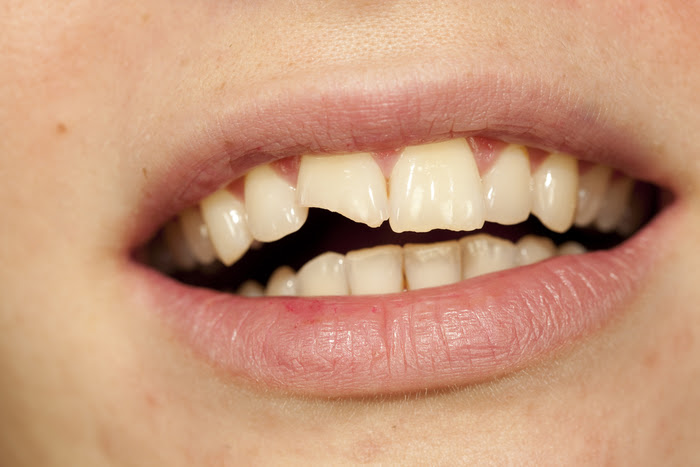Why Restore a Broken Tooth?

Maybe you’ve been there before. You’re crunching down on a piece of hard candy or ice and you suddenly feel something – a broken tooth! This is not a scenario anyone wishes for, but unfortunately it can happen, even to individuals with healthy teeth. When this occurs, what is the best course of treatment? Should you repair it or let it go until it causes further problems? Our team at the LG Dental Centre discusses why addressing a damaged tooth now can save you time and money in the future. Why restore a broken tooth? Read on to find out.
What causes broken teeth?
Broken teeth can occur due to a number of reasons. Maybe you were playing contact sports without an appropriate mouth guard. Perhaps you fell on the sidewalk or sustained trauma in an automobile accident. Whatever the reason for your broken tooth, it is important to address the situation as quickly as possible.
Types of Fractures
There are several different types of broken teeth. These include:
- Craze lines: These appear in the enamel, the outermost layer of a tooth. Craze lines are only concerning from an aesthetic standpoint and cause no oral health issues.
- Broken cusp: The chewing surfaces of the teeth have peaks and valleys. The peaks are referred to as cusps. If one of these breaks off, it can weaken the tooth and cause further damage. Typically, a fractured cusp does not cause pain.
- Cracked tooth: If a fracture begins near the chewing surface and extends down the length of the root, it is referred to as a cracked tooth. This condition can worsen over time, so early diagnosis and treatment is essential.
- Split tooth: Characterized by distinct segments that can be moved and separated, a split tooth is usually the result of an untreated cracked tooth. Generally, a split tooth must be removed.
- Vertical root fracture: Often asymptomatic, a vertical root fracture begins in the root and extends toward the chewing surface.
Why is restoring a broken tooth important?
Whenever the structure of a tooth is compromised, it becomes weak. Therefore, even a small chip can make your tooth much more vulnerable to further breakage. In addition, once a tooth is fractured, it is more susceptible to decay. By addressing the problem in the early stages, you can prevent a host of more serious dental issues from developing later on.
What are my treatment options for restoring a broken tooth?
There are several restorative options for repairing a broken tooth. The procedure recommended for you will be determined by the extensiveness of the damage. Some of the most common treatments include:
- Dental fillings: Small fractures and cracks can often be repaired with a dental filling. This involves the application of composite resin to modify the shape of the tooth as necessary. Once complete, the tooth is polished and the bite is adjusted.
- Dental crowns: Larger fractures may necessitate a dental crown. This custom restoration fits over the whole tooth structure and provides strength and reinforcement.
- Porcelain veneers: If a front tooth has been chipped or broken, a custom porcelain veneer can conceal the imperfection and strengthen the structure. These restorations adhere to the front surfaces of the teeth and are designed to blend in with your smile for a natural-looking appearance.
- Root canal therapy: Occasionally, a fracture is so large that it invades the pulp chamber of a tooth. When this occurs, bacteria breach the pulp and cause an infection. The only way to eliminate this without an extraction is to perform root canal therapy. During this process, the living tissues inside the tooth are removed, and the canals are filled, eliminating infection at the source.
Schedule a consultation today
To learn more about restoring a broken tooth, schedule a consultation at our Toronto, ON dental clinic. Contact us online or give us a call at 306-374-7272.
